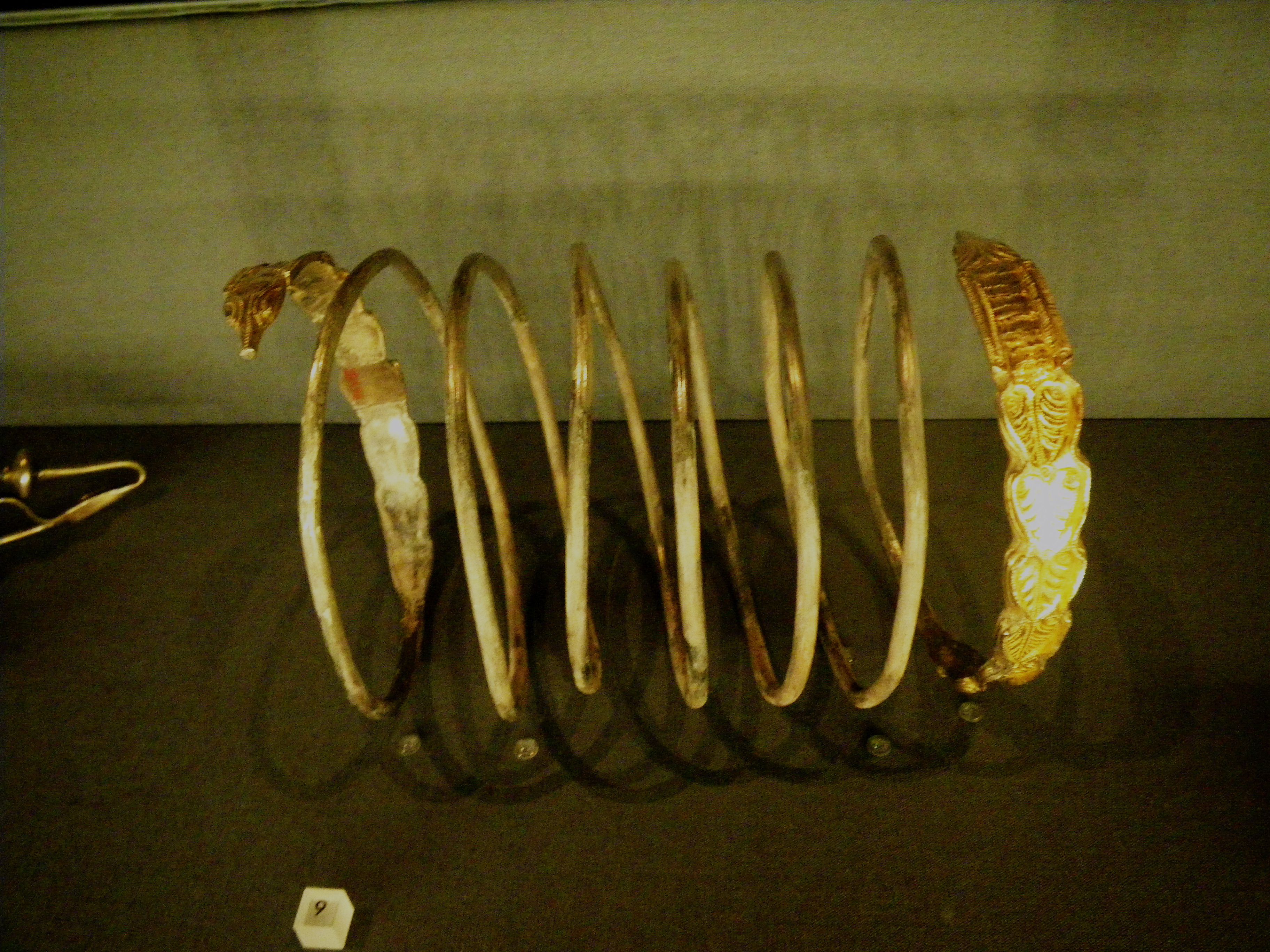Decebalus Treasure on:
[Wikipedia]
[Google]
[Amazon]
 The Decebalus Treasure is written by
The Decebalus Treasure is written by


 The Decebalus Treasure is written by
The Decebalus Treasure is written by Cassius Dio
Lucius Cassius Dio (), also known as Dio Cassius ( ), was a Roman historian and senator of maternal Greek origin. He published 80 volumes of the history on ancient Rome, beginning with the arrival of Aeneas in Italy. The volumes documented the ...
concerning events said to have happened in the Roman world during the 2nd century AD.
The story
During the Second Dacian War many Dacian nobles surrendered or were caught. One of them, Bicilis, disclosed the location of the treasure, buried in a river's bed.

"The treasures of Decebalus were also discovered, though hidden beneath the river Sargetia, which ran past his palace. With the help of some captives Decebalus had diverted the course of the river, made an excavation in its bed, and into the cavity had thrown a large amount of silver and gold and other objects of great value that could stand a certain amount of moisture; then he had heaped stones over them and piled on earth, afterwards bringing the river back into his course. He also had caused the same captives to deposit his robes and other articles of a like nature in caves, and after accomplishing this had made away with them to prevent them from disclosing anything. But Bicilis, a companion of his who knew what had been done, was seized and gave information about these things."Decebalus used Roman prisoners to deviate the course of the Sargetia river and buried the treasure. He buried "so much silver and gold and some other artefacts who can survive moisture", after that the river was returned to its original course. The rest was of the treasure was deposited in surrounding caves, and the Roman prisoners were slaughtered.
Sources
T. Statilius Crito of Heraclea,Trajan
Trajan ( ; la, Caesar Nerva Traianus; 18 September 539/11 August 117) was Roman emperor from 98 to 117. Officially declared ''optimus princeps'' ("best ruler") by the senate, Trajan is remembered as a successful soldier-emperor who presi ...
's procurator and medic, compiling a ''Getica'', wrote that the Decebalus Treasure had 5,000,000 lbs (2,200 tonne
The tonne ( or ; symbol: t) is a unit of mass equal to 1000 kilograms. It is a non-SI unit accepted for use with SI. It is also referred to as a metric ton to distinguish it from the non-metric units of the short ton ( United State ...
s) of gold
Gold is a chemical element with the symbol Au (from la, aurum) and atomic number 79. This makes it one of the higher atomic number elements that occur naturally. It is a bright, slightly orange-yellow, dense, soft, malleable, and ductile met ...
and 10,000,000 lbs (4,500 tonnes) of silver
Silver is a chemical element with the Symbol (chemistry), symbol Ag (from the Latin ', derived from the Proto-Indo-European wikt:Reconstruction:Proto-Indo-European/h₂erǵ-, ''h₂erǵ'': "shiny" or "white") and atomic number 47. A soft, whi ...
. Some modern historians, such as Julian Bennett believe that this is a copy error. Still if the real treasure was one ten-thousandth of those figures, its value is still the equivalent of 160 million denarii
The denarius (, dēnāriī ) was the standard Roman silver coin from its introduction in the Second Punic War to the reign of Gordian III (AD 238–244), when it was gradually replaced by the antoninianus. It continued to be minted in very sm ...
and 31.5 million aurei
The ''aureus'' ( ''aurei'', 'golden', used as a noun) was a gold coin of ancient Rome originally valued at 25 pure silver ''denarii'' (sin. denarius). The ''aureus'' was regularly issued from the 1st century BC to the beginning of the 4th cent ...
.
Jérôme Carcopino
Jérôme Carcopino (27 June 1881 – 17 March 1970) was a French historian and author. He was the fifteenth member elected to occupy seat 3 of the Académie française, in 1955.
Biography
Carcopino was born at Verneuil-sur-Avre, Eure, son of a d ...
has estimated the treasure at 165,500 kg of gold and 331,000 kg of silver. Between 1540 and 1759 in Sarmizegetusa Regia
Sarmizegetusa Regia, also Sarmisegetusa, Sarmisegethusa, Sarmisegethuza, Ζαρμιζεγεθούσα (''Zarmizegethoúsa'') or Ζερμιζεγεθούση (''Zermizegethoúsē''), was the capital and the most important military, religious an ...
700 kg of gold was recovered, much more was discovered in the 19th century.(Strobel, Dakerkriegen)
However, the Roman's claim that they looted in a single hoard 165 tons of gold and 300 tons of silver is accepted by some historians. This amount is perhaps credible in terms of the massive Dacian exploitation of precious metals in the Apuseni Mountains along with trade payments and tributes from abroad (including from Roman empire) paid to Dacia. Also, its existence in one spot suggests that Dacian State had a central control of precious metal circulation.
A similar legend to the concealment of Decebalus' treasure concerns the treasure of Alaric I king of the Visigoths (died in 410 AD).
See also
* Decebalus * Trajan's Dacian Wars *Trajan
Trajan ( ; la, Caesar Nerva Traianus; 18 September 539/11 August 117) was Roman emperor from 98 to 117. Officially declared ''optimus princeps'' ("best ruler") by the senate, Trajan is remembered as a successful soldier-emperor who presi ...
References
Bibliography
* {{Commons, Dacian and Dacians Military history of Dacia Thracian archaeological artifacts